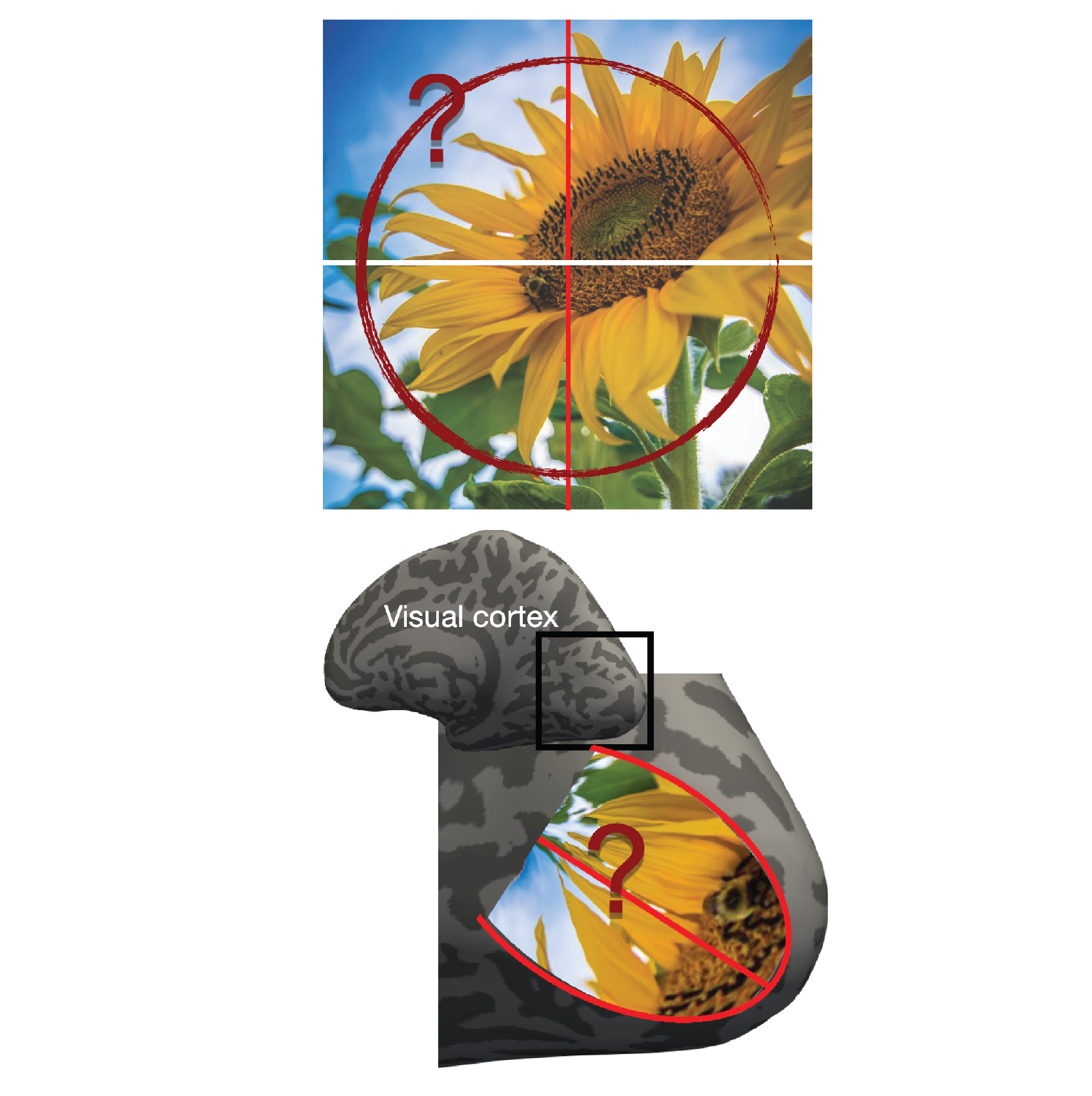ABOUT ME
 What we see isn’t simply a picture of the outside world. It’s created by our brains through intricate processes that turn patterns of light first sensed by our eyes into meaningful experiences. This process relies heavily on context: what is in the surrounding environment, what happened in the recent past, and internal goals all jointly shape visual experience. Context includes all these dimensions and dynamically shapes how we perceive and interpret the world.
What we see isn’t simply a picture of the outside world. It’s created by our brains through intricate processes that turn patterns of light first sensed by our eyes into meaningful experiences. This process relies heavily on context: what is in the surrounding environment, what happened in the recent past, and internal goals all jointly shape visual experience. Context includes all these dimensions and dynamically shapes how we perceive and interpret the world.My past and current research focuses on how the brain enables us to perceive and understand the world. I am especially interested in how perception is shaped by cognitive processes—such as attention and working memory—and how these internal factors interact with fundamental neural mechanisms to change the way we experience what’s around us. To study these mechanisms, I use a combination of functional neuroimaging (such as fMRI and intracranial EEG) to observe brain activity, behavioral experiments to measure responses and performance, and computational modeling to connect what happens in the brain to theories about how we recognize and interpret our environment.
I am currently a postdoctoral researcher working with Serge Dumoulin at the Spinoza Centre in Amsterdam and Janneke Jehee at the Donders Institute. I obtained my PhD at Boston University, where I worked in the lab of Sam Ling, and continued with postdoctoral research with Mike Landy and Jon Winawer at New York University.
SCIENTIFIC PROJECTS

Estimating the attention window with fMRI
This project shows that people can not only focus their attention on a single spot, but also widen or narrow the area they pay attention to in their visual field, much like adjusting a spotlight or zoom lens. We analyzed brain activity with fMRI while people changed the size and location of their attentional focus, and developed a method to track how and where attention is distributed in the brain. This reveals that our brains dynamically adapt the “width” of attention to fit the task at hand.

Temporal dynamics of tactile responses
This project investigates how tactile perception adapts to repeated or sustained stimuli over time. We find that both touch and vision use similar neural principles to process changing information. Using brain recordings (iEEG) and neuroimaging (fMRI), we find that a computational model that takes into account the temporal history accurately predicts how the somatosensory cortex responds to repeated tactile stimulation, helping explain how sensation adapts and recovers in the brain.
This project was recently presented at Society for Neuroscience | [pdf]

Mapping spatial precision in the visual field
This project investigates how precise people can report locations that are always the same distance from where they are looking. Using both behavioral experiments and fMRI, we link the precision of these spatial judgments with how the brain represents those locations.
This project was recently presented at Vision Sciences Society | [pdf]
PUBLICATIONS
For a full list of my publications see my Google Scholar profile
Dynamic estimation of the attentional field from visual cortical activity
Bloem* IM, Bakst* L, McGuire JT, Ling S (2025). eLife. [*shared co-first author]
Link to paper | pdf | data and code
How does orientation-tuned normalization spread across the visual field?
Klímová M, Bloem IM, Ling S (2025). Journal of Neurophysiology.
Link to paper | pdf | data and code
Normalization by orientation-tuned surround in V1-V3
Fang Z, Bloem IM, Olssen C, Ma WJ, Winawer J (2023). PLOS Comp Bio.
Link to paper | pdf | data and code
Attention preserves the selectivity of feature-tuned normalization
Klímová M, Bloem IM, Ling S (2023). Journal of Neurophysiology.
Link to paper | pdf | data and code
Saturating Nonlinearities of Contrast Response in Human Visual Cortex
Vinke* LN, Bloem* IM, Ling S (2022). Journal of Neuroscience. [*shared co-first author]
Link to paper | pdf | data and code
The specificity of orientation-tuned normalization within human early visual cortex
Klímová M, Bloem IM, Ling S (2021). Journal of Neurophysiology.
Link to paper | pdf | data and code
Normalization governs attentional modulation within human visual cortex
Bloem IM, Ling S (2019). Nature Communications.
Link to paper | pdf | data and code
Visual memories bypass normalization
Bloem IM, Watanabe YL, Kibbe MM, Ling S (2018). Psychological Science.
Link to paper | pdf
Attentional modulation interacts with orientation anisotropies in contrast perception
Bloem IM, Ling S (2017). Journal of Vision.
Link to paper | pdf
The impact of interference on short- term memory for visual orientation
Rademaker RL, Bloem IM, De Weerd P, Sack AT (2015). Journal of Experimental Psychology: Human Perception and Performance.
Link to paper | pdf | data and code
Intensive tool-practice and skillfulness facilitate the extension of the human body schema beyond first order limitations
Rademaker RL, Wu D-A, Bloem IM, Sack AT (2014). Neuropsychologia.
Link to paper | pdf
Scrutinizing visual images: The role of gaze in mental imagery and memory
Laeng B, Bloem IM, D’Ascenzo S, & Tommasi L (2014). Cognition.
Link to paper | pdf